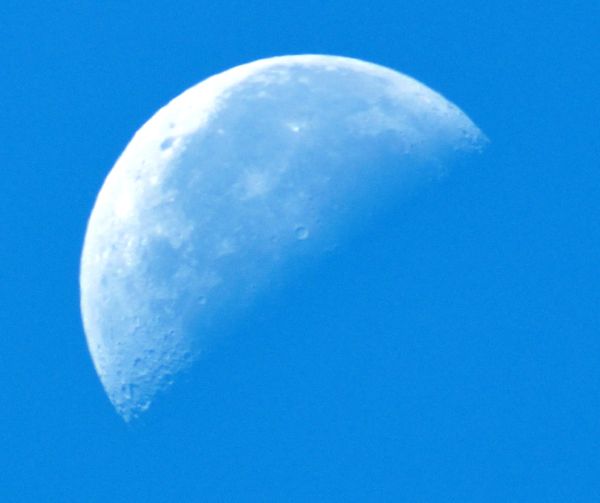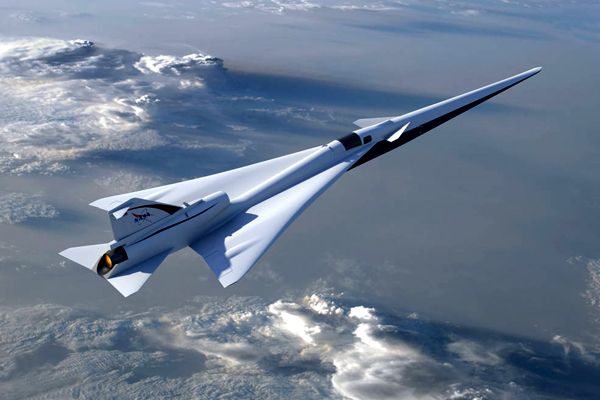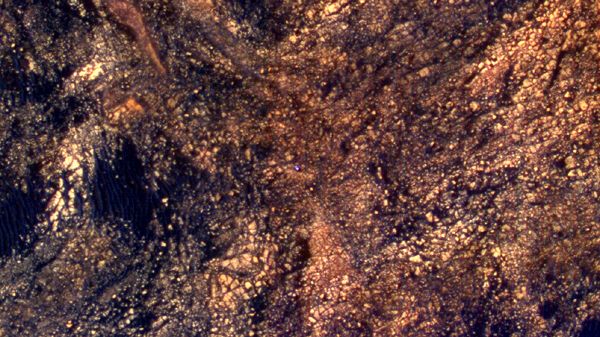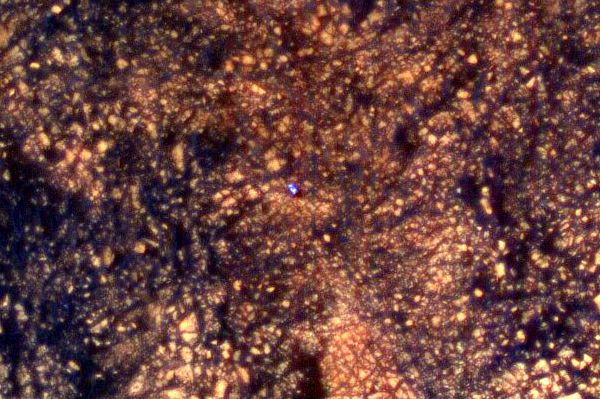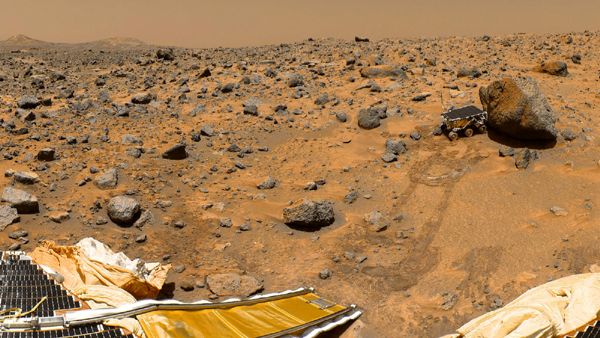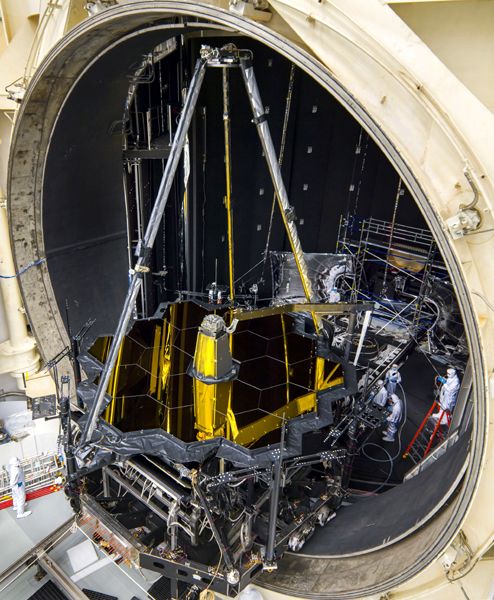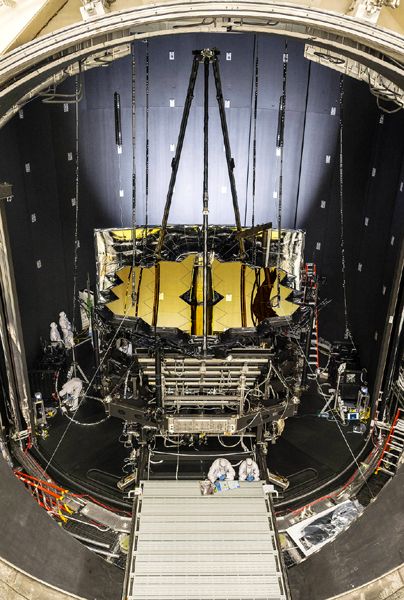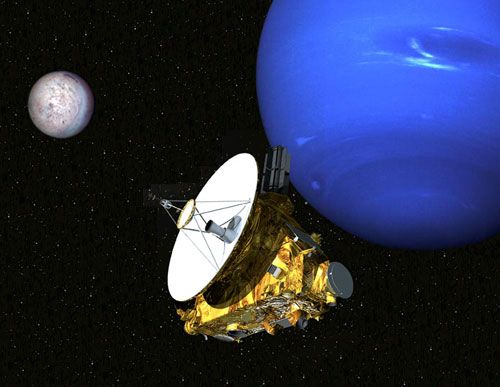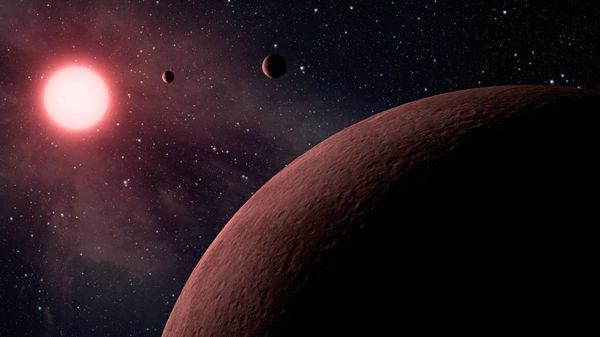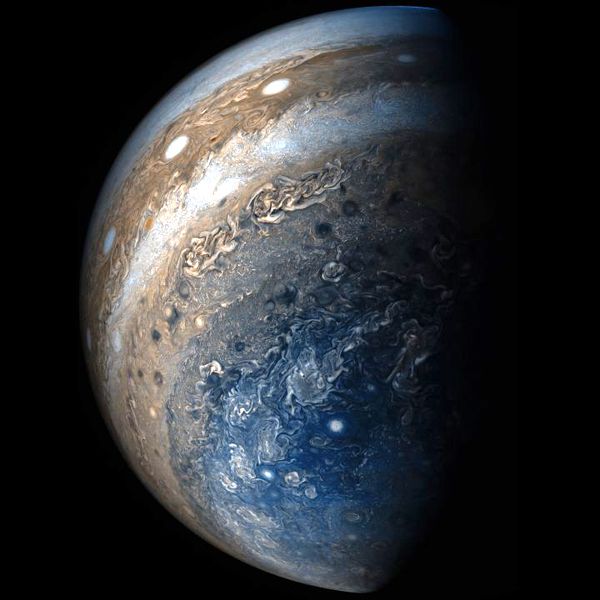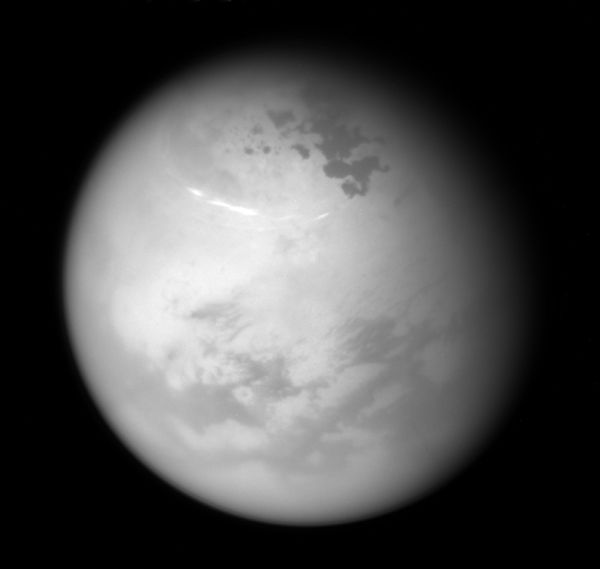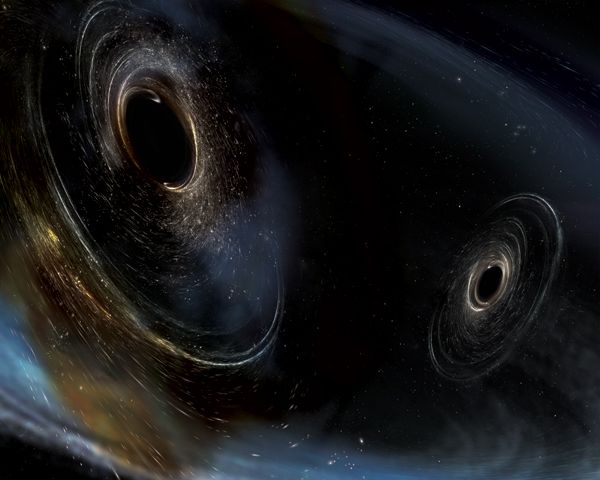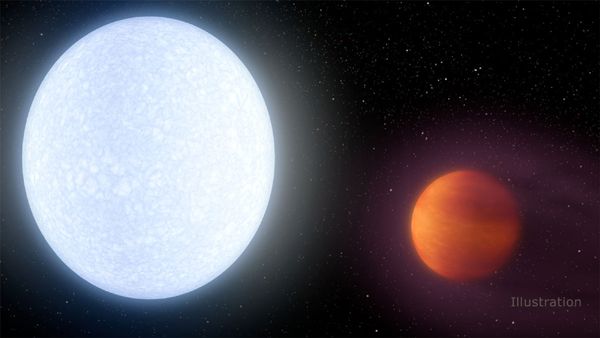 NASA / JPL - Caltech
Astronomers Find Planet Hotter Than Most Stars (Press Release)
NASA / JPL - Caltech
Astronomers Find Planet Hotter Than Most Stars (Press Release)
A newly discovered Jupiter-like world is so hot, it's being vaporized by its own star.
With a dayside temperature of more than 7,800 degrees Fahrenheit
(4,600 Kelvin), KELT-9b is a planet that is hotter than most stars. But its blue A-type star, called KELT-9, is even hotter -- in fact, it is probably unraveling the planet through evaporation.
"This is the hottest gas giant planet that has ever been discovered," said Scott Gaudi, astronomy professor at The Ohio State University in Columbus, who led a study on the topic. He worked on this study while on sabbatical at NASA's Jet Propulsion Laboratory, Pasadena, California. The unusual planet is described in the journal
Nature and at a presentation at the American Astronomical Society summer meeting this week in Austin, Texas.
KELT-9b is 2.8 times more massive than Jupiter, but only half as dense. Scientists would expect the planet to have a smaller radius, but the extreme radiation from its host star has caused the planet's atmosphere to puff up like a balloon.
Because the planet is tidally locked to its star -- as the Moon is to Earth -- one side of the planet is always facing toward the star, and one side is in perpetual darkness. Molecules such as water, carbon dioxide and methane can't form on the dayside because it is bombarded by too much ultraviolet radiation. The properties of the nightside are still mysterious -- molecules may be able to form there, but probably only temporarily.
"It's a planet by any of the typical definitions of mass, but its atmosphere is almost certainly unlike any other planet we've ever seen just because of the temperature of its dayside," Gaudi said.
The KELT-9 star is only 300 million years old, which is young in star time. It is more than twice as large, and nearly twice as hot, as our Sun. Given that the planet's atmosphere is constantly blasted with high levels of ultraviolet radiation, the planet may even be shedding a tail of evaporated planetary material like a comet.
"KELT-9 radiates so much ultraviolet radiation that it may completely evaporate the planet," said Keivan Stassun, a professor of physics and astronomy at Vanderbilt University, Nashville, Tennessee, who directed the study with Gaudi.
But this scenario assumes the star doesn't grow to engulf the planet first.
"KELT-9 will swell to become a red giant star in a few hundred million years," said Stassun. "The long-term prospects for life, or real estate for that matter, on KELT-9b are not looking good."
The planet is also unusual in that it orbits perpendicular to the spin axis of the star. That would be analogous to the planet orbiting perpendicular to the plane of our solar system. One "year" on this planet is less than two days.
KELT-9b is nowhere close to habitable, but Gaudi said there's a good reason to study worlds that are unlivable in the extreme.
"As has been highlighted by the recent discoveries from the MEarth collaboration, the planet around Proxima Centauri, and the astonishing system discovered around TRAPPIST-1, the astronomical community is clearly focused on finding Earthlike planets around small, cooler stars like our Sun. They are easy targets and there's a lot that can be learned about potentially habitable planets orbiting very low-mass stars in general. On the other hand, because KELT-9b's host star is bigger and hotter than the Sun, it complements those efforts and provides a kind of touchstone for understanding how planetary systems form around hot, massive stars," Gaudi said.
The KELT-9b planet was found using one of the two telescopes called KELT, or Kilodegree Extremely Little Telescope. In late May and early June 2016, astronomers using the KELT-North telescope at Winer Observatory in Arizona noticed a tiny drop in the star's brightness -- only about half of one percent -- which indicated that a planet may have passed in front of the star. The brightness dipped once every 1.5 days, which means the planet completes a "yearly" circuit around its star every 1.5 days.
Subsequent observations confirmed the signal to be due to a planet, and revealed it to be what astronomers call a "hot Jupiter" -- the kind of planet the KELT telescopes are designed to spot.
Astronomers at Ohio State, Lehigh University in Bethlehem, Pennsylvania, and Vanderbilt jointly operate two KELTs
(one each in the northern and southern hemispheres) to fill a large gap in the available technologies for finding exoplanets. Other telescopes are designed to look at very faint stars in much smaller sections of the sky, and at very high resolution. The KELTs, in contrast, look at millions of very bright stars at once, over broad sections of sky, and at low resolution.
"This discovery is a testament to the discovery power of small telescopes, and the ability of citizen scientists to directly contribute to cutting-edge scientific research," said Joshua Pepper, astronomer and assistant professor of physics at Lehigh University in Bethlehem, Pennsylvania, who built the two KELT telescopes.
The astronomers hope to take a closer look at KELT-9b with other telescopes -- including NASA's
Spitzer and
Hubble space telescopes, and eventually the
James Webb Space Telescope, which is scheduled to launch in 2018. Observations with Hubble would enable them to see if the planet really does have a cometary tail, and allow them to determine how much longer that planet will survive its current hellish condition.
"Thanks to this planet's star-like heat, it is an exceptional target to observe at all wavelengths, from ultraviolet to infrared, in both transit and eclipse. Such observations will allow us to get as complete a view of its atmosphere as is possible for a planet outside our solar system," said Knicole Colon, paper co-author who was based at NASA Ames Research Center in California's Silicon Valley during the time of this study.
The study was largely funded by the National Science Foundation
(NSF) through an NSF CAREER Grant, NSF PAARE Grant and an NSF Graduate Research Fellowship. Additional support came from NASA via the Jet Propulsion Laboratory and the Exoplanet Exploration Program; the Harvard Future Faculty Leaders Postdoctoral Fellowship; Theodore Dunham, Jr., Grant from the Fund for Astronomical Research; and the Japan Society for the Promotion of Science.
Source: Jet Propulsion Laboratory




